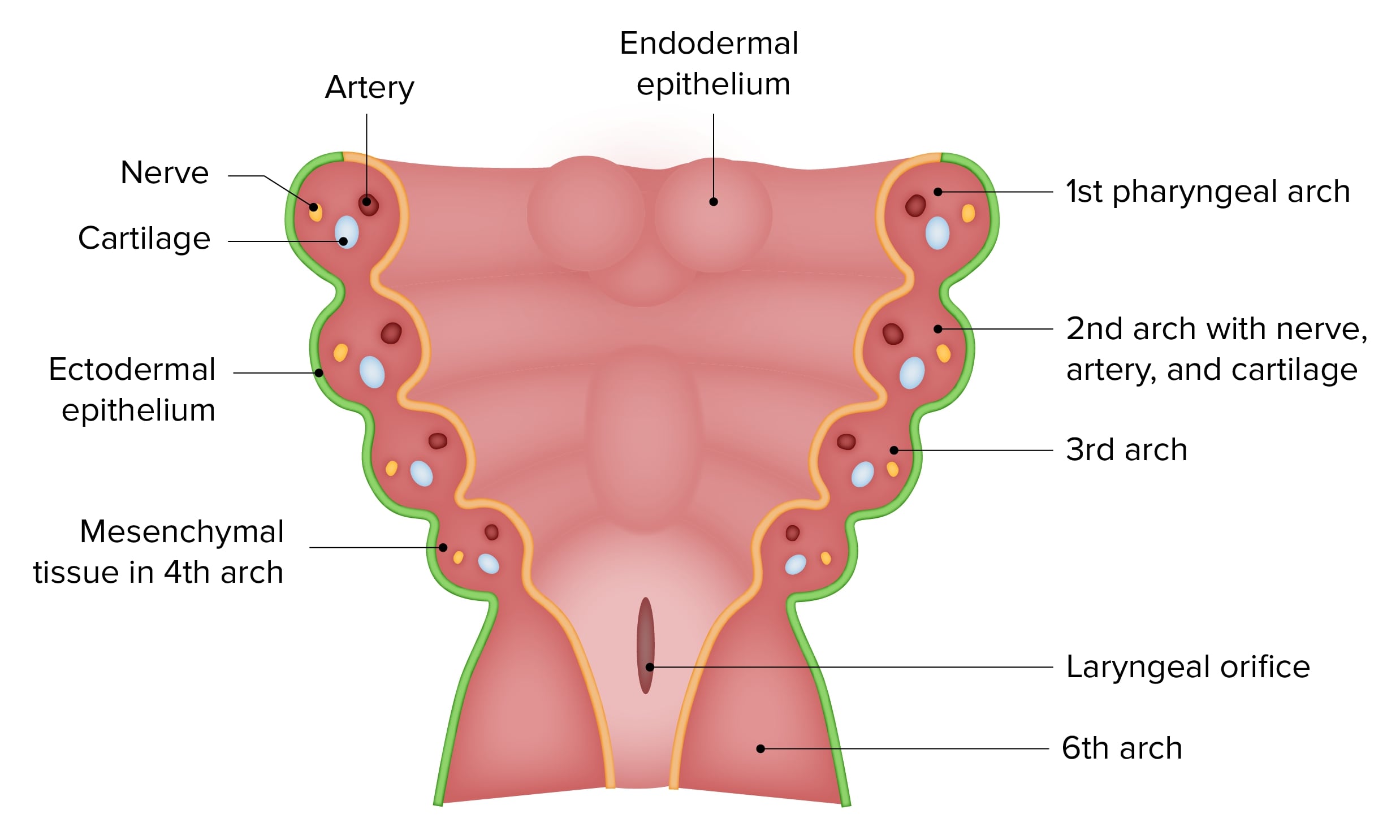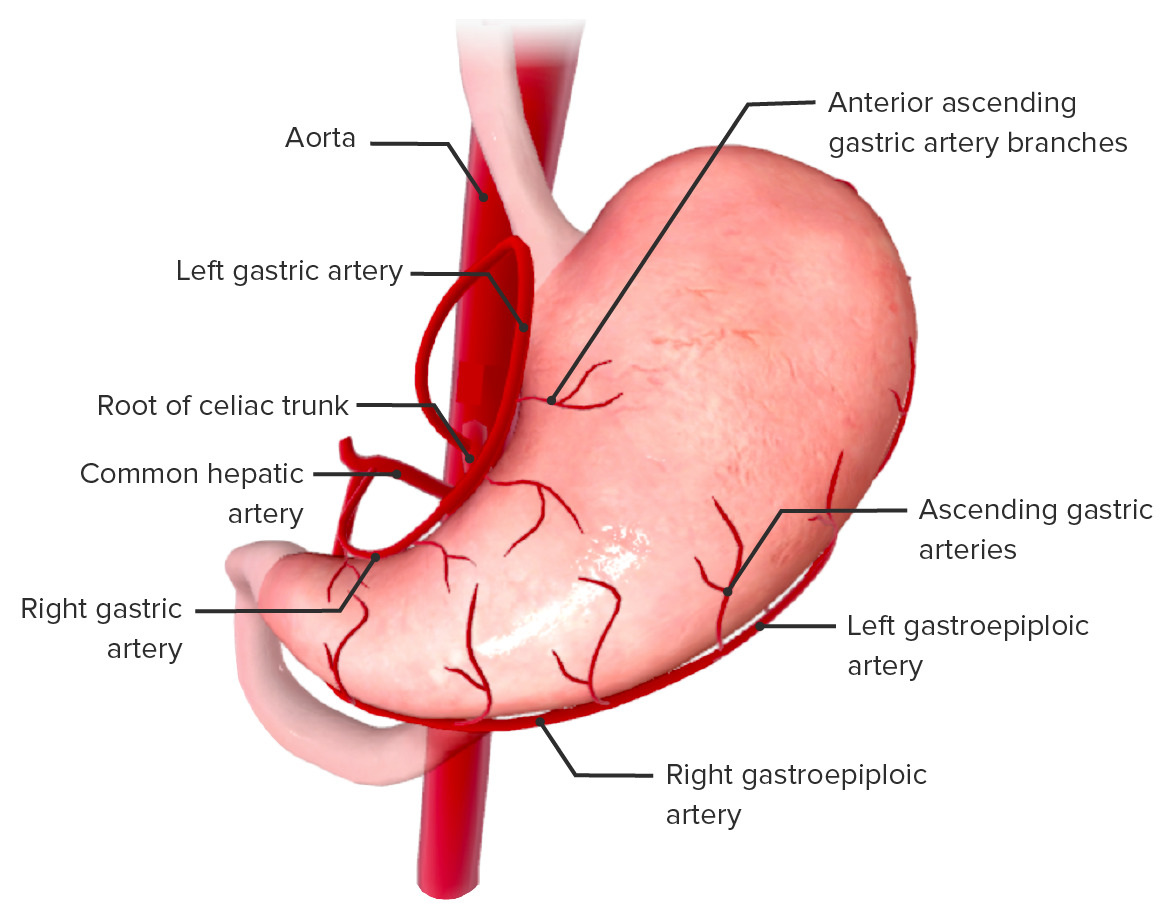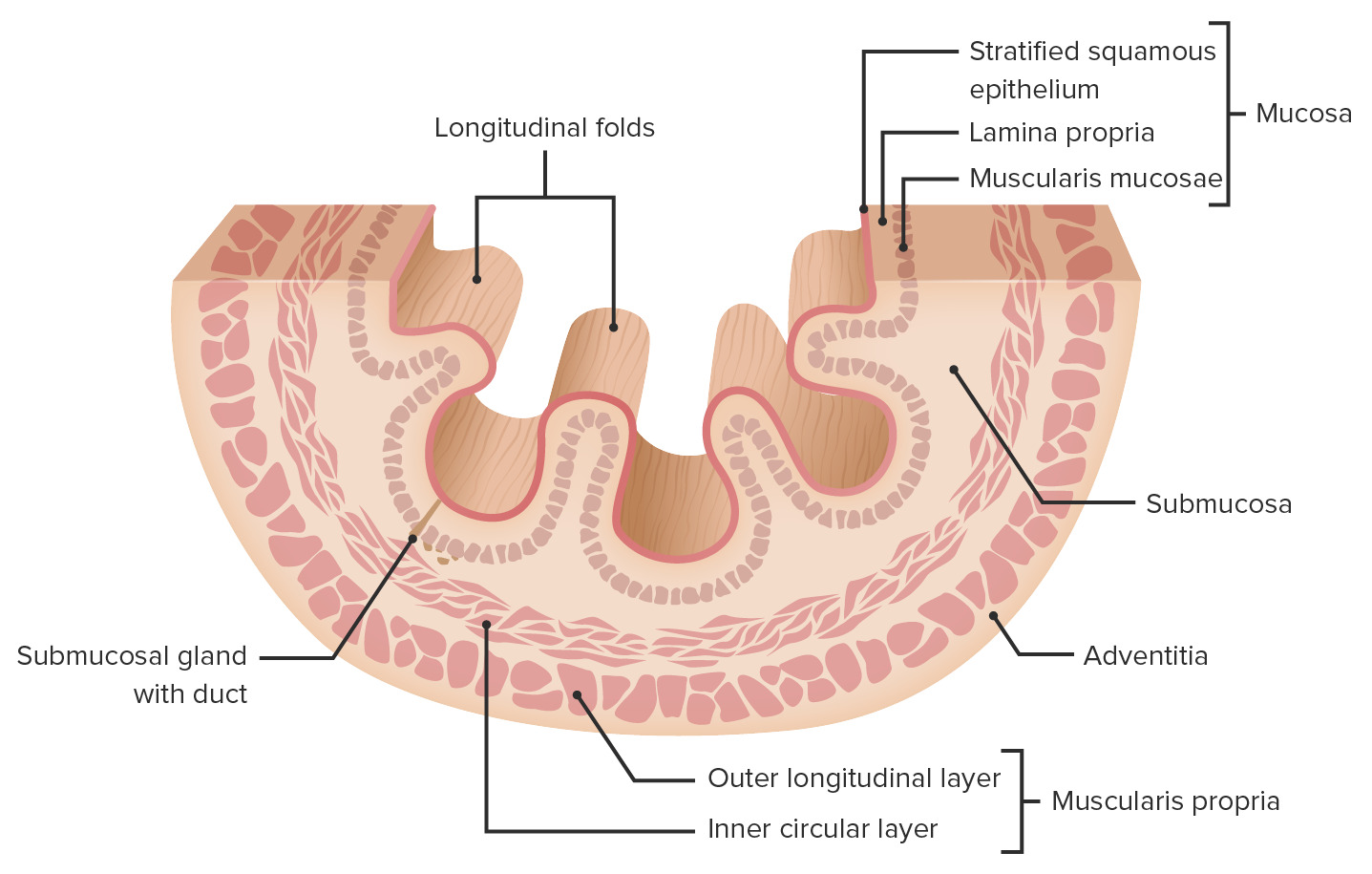Playlist
Show Playlist
Hide Playlist
Anatomy of the Oral Cavity, Pharynx, and Esophagus
-
Slides Anatomy of the Oral Cavity Pharynx and Esophagus.pdf
-
Reference List Anatomy.pdf
-
Download Lecture Overview
00:01 If we then just look at the beginning of this, we have the oral cavity and the pharynx so if we can see up within the oral cavity passing in through the teeth which are responsible for chewing the food, the tongue which has a role in kind of tasting and also manipulating the food into position to help with swallowing. We can see that's eventually by way of the pharynx going to then pass down into the esophagus which can be around 20-25 cm long, but obviously if you're a tall person it will be substantially longer than if you are a shorter person and it will grow as individuals grow with height as they age. 00:36 In pink at the top, we can see the pharynx which is a real muscular tube that helps to coordinate food moving down into the esophagus during swallowing and here we have the pharyngeal-esophageal junction which happens around C6, so the 6th cervical vertebrae. The esophagus then, as I mentioned previously, passes all the way down the midline but then it does move to the left hand side. 01:01 So remember on the right hand side of our upper abdomen we have the liver, the stomach is situated on the left so the esophagus then around about the 11th thoracic vertebral level it courses to the left forming the gastroesophageal junction. And we can see as we zoom in to the esophagus it passing very much just anterior to the vertebrae of the vertebral column. So you can see here we have a cervical part of the esophagus that's really running alongside the cervical vertebrae as it's contiguous with the pharynx. And then as it follows the course of the spinal vertebrae, we can see there, you give rise to the thoracic part. And this really occurs at what's known as the suprasternal notch. So a horizontal line that passes through the superior aspect of the sternum, running there we can see it separating the cervical part from the thoracic part. The thoracic esophagus then passes into the abdomen by passing through the esophageal hiatus. The esophageal hiatus is a hole within the diaphragm that allows the esophagus to pass from the thorax into the abdomen and then we can see a very short abdominal part of the esophagus before it becomes contiguous with the stomach. So here we can see a section through both the esophagus and the stomach, we can see that if we were to take a section from that wall it will be made up of numerous different layers. 02:27 And these first 3 layers that I've described here are forming the mucosa. So we have the most superficial squamous epithelium that can often be swift away with attrition. We then have a lamina propria, and a lamina muscularis mucosa. So these 3 layers are very high transition. They can be turned over quite rapidly and they're forming the mucosa. 02:48 Deep to the mucosa, we have the submucosal layer, we have circular muscle, and we have longitudinal muscle layers. And these muscles work together to help the peristaltic movement of the esophagus and help to move food down from the pharynx down into the stomach. The most outer layer of this is the serosa which you can see there. So a complex multilayered structure that helps food pass down into the stomach.
About the Lecture
The lecture Anatomy of the Oral Cavity, Pharynx, and Esophagus by James Pickering, PhD is from the course Anatomy of the Esophagus and Stomach.
Included Quiz Questions
What is the vertebral level where the esophageal hiatus is located?
- T10
- T6
- T8
- T12
Which of the following cardiac structures is located directly anterior to the esophagus?
- Left atrium
- Right atrium
- Right ventricle
- Left ventricle
- Apex
What is the vertebral level where the aorta passes through the diaphragm?
- T12
- T10
- T9
- T8
- T11
Which artery supplies blood to the esophagus?
- Aorta
- Subclavian
- Common carotid
- Brachiocephalic
- Vertebral
Customer reviews
5,0 of 5 stars
| 5 Stars |
|
5 |
| 4 Stars |
|
0 |
| 3 Stars |
|
0 |
| 2 Stars |
|
0 |
| 1 Star |
|
0 |






